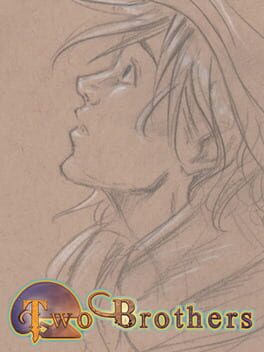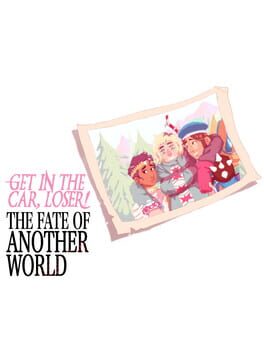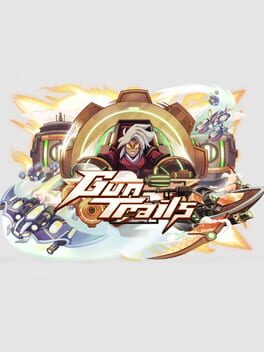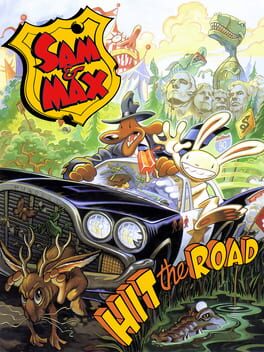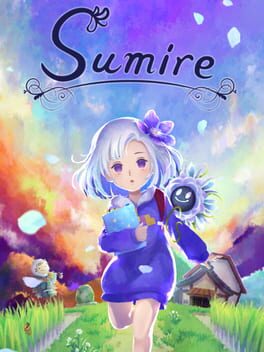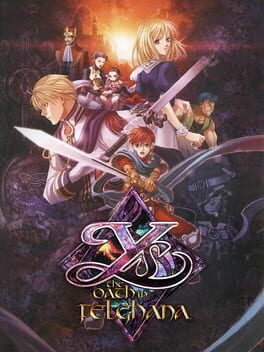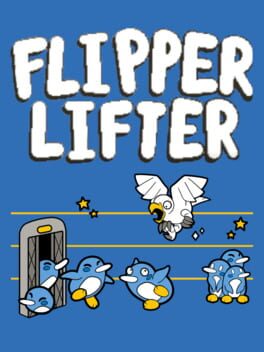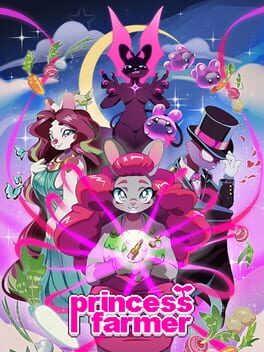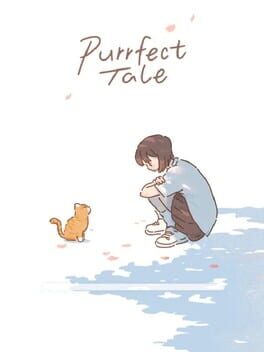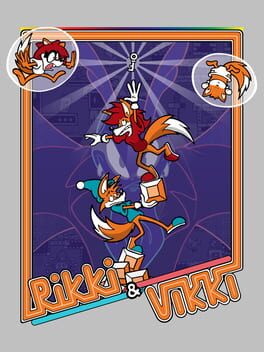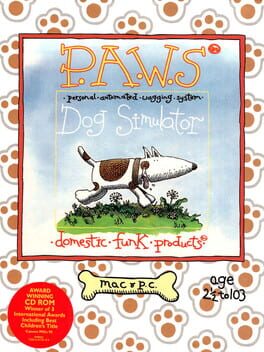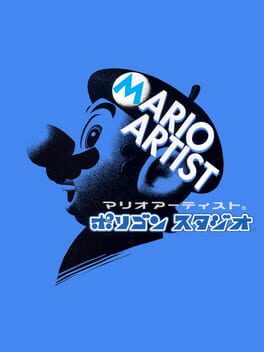oolongstains
2013
I feel like I'm usually pretty patient, but man. This is easily one of the worst games I've ever played.
Lots of enthusiasm, very little understanding of what makes a game tick.
It's very excited about making you read lots of very poor, florid writing. Your wife gets referred to as your "loving wife" 12 times before she's killed in a scripted encounter 2 minutes into the game.
You switch resolutions by typing "1" through "9" on your keyboard, and any option you pick makes the window disappear permanently. You enable gamepad controls by hitting the "3" key on your keyboard in the options menu. Stepping into most walls gets you stuck or lets you clip through.
The map design is slapdash in a way a lot of amateur map design is, with wide open spaces and escher-like mashing up of verticality into flat spaces. In a Yume Nikki-like game this could work really well, but this game doesn't seem aware that its map design is weird, or that its "bad" properties could make it interesting.
Lots of enthusiasm, very little understanding of what makes a game tick.
It's very excited about making you read lots of very poor, florid writing. Your wife gets referred to as your "loving wife" 12 times before she's killed in a scripted encounter 2 minutes into the game.
You switch resolutions by typing "1" through "9" on your keyboard, and any option you pick makes the window disappear permanently. You enable gamepad controls by hitting the "3" key on your keyboard in the options menu. Stepping into most walls gets you stuck or lets you clip through.
The map design is slapdash in a way a lot of amateur map design is, with wide open spaces and escher-like mashing up of verticality into flat spaces. In a Yume Nikki-like game this could work really well, but this game doesn't seem aware that its map design is weird, or that its "bad" properties could make it interesting.
2022
Now this is what RPGs are all about.
What a great game. Managing to make each campaign so distinctive, so well-paced and interesting within their short runtime is incredible. Especially when they're so experimental and all going for such different things from each other.
The Far Future chapter is especially incredible, managing to pull off that kind of pacing without any combat at all in 1994 is so ambitious. Wonder if they'd played Ihatov Monogatari.
The new stuff from the remake is generally pretty great, but I felt like the radar was a bit too aggressive in making sure players never get lost. There are moments in the Far Future and Near Future chapters where the player should feel lost and stressed, and the radar is actively getting in the way of that by always telling you where your next step is.
What a great game. Managing to make each campaign so distinctive, so well-paced and interesting within their short runtime is incredible. Especially when they're so experimental and all going for such different things from each other.
The Far Future chapter is especially incredible, managing to pull off that kind of pacing without any combat at all in 1994 is so ambitious. Wonder if they'd played Ihatov Monogatari.
The new stuff from the remake is generally pretty great, but I felt like the radar was a bit too aggressive in making sure players never get lost. There are moments in the Far Future and Near Future chapters where the player should feel lost and stressed, and the radar is actively getting in the way of that by always telling you where your next step is.
2023
I really wanted to like this, but it ended up being a pretty big disappointment.
The art and music are great - it feels like aesthetics were their major focus. Playability suffers a lot though. The focus on detailed sprites means your ship and enemies are enormous despite the small screen, which gives you very little space to maneuver. It's even worse because your ship's speed is so fast; you want the ability to move slowly to dodge large waves of bullets, but you don't get that here. Since the screen is so crowded with large sprites enemies have a tendency to spawn out of nowhere, which makes it even more dangerous to move. It seems to be influenced by Cave games but doesn't really take into account that they make ship positioning a big part of gameplay - Gun Trails actively discourages you from moving around the screen or trying to stake out a position.
The super weapon feels like an attempt to do a take on Dodonpachi's hyper - a strong laser that does high damage, and that charges up as you maintain enemy combos. Unfortunately, the game intentionally takes away any stored charge when you encounter minibosses, which denies you the ability to use a stored up super weapon in exactly the time you'd want to use it. It's also the only way to slow down your ship's movement, which feels awkward and limited.
After playing I booted up GG Aleste again and it reminded me how other portable shmups on small screens have intentionally gone for smaller sprites to maintain maneuverability and the sense of a larger playfield. I found myself wishing Gun Trails had made the same choice.
The art and music are great - it feels like aesthetics were their major focus. Playability suffers a lot though. The focus on detailed sprites means your ship and enemies are enormous despite the small screen, which gives you very little space to maneuver. It's even worse because your ship's speed is so fast; you want the ability to move slowly to dodge large waves of bullets, but you don't get that here. Since the screen is so crowded with large sprites enemies have a tendency to spawn out of nowhere, which makes it even more dangerous to move. It seems to be influenced by Cave games but doesn't really take into account that they make ship positioning a big part of gameplay - Gun Trails actively discourages you from moving around the screen or trying to stake out a position.
The super weapon feels like an attempt to do a take on Dodonpachi's hyper - a strong laser that does high damage, and that charges up as you maintain enemy combos. Unfortunately, the game intentionally takes away any stored charge when you encounter minibosses, which denies you the ability to use a stored up super weapon in exactly the time you'd want to use it. It's also the only way to slow down your ship's movement, which feels awkward and limited.
After playing I booted up GG Aleste again and it reminded me how other portable shmups on small screens have intentionally gone for smaller sprites to maintain maneuverability and the sense of a larger playfield. I found myself wishing Gun Trails had made the same choice.
Turns out Sam & Max is pretty great! Sam & Max? You ever hear about that one? I'm only 30 years late.
The jokes are still great; there's a lot of good specific gags, but I think it's the overall vibe and the Sam/Max relationship that carries it the most.
Seems like this was one of the first games where Lucasarts abandoned their original UI for something a lot more like Sierra's. For how much their approaches got contrasted to each other, it's kind of funny seeing them directly adopt Sierra's method of interacting with the game world.
The jokes are still great; there's a lot of good specific gags, but I think it's the overall vibe and the Sam/Max relationship that carries it the most.
Seems like this was one of the first games where Lucasarts abandoned their original UI for something a lot more like Sierra's. For how much their approaches got contrasted to each other, it's kind of funny seeing them directly adopt Sierra's method of interacting with the game world.
2021
Gorgeous artwork, beautifully presented. This is the kind of 2D game I dreamed of seeing years ago. The endlessly scrolling "barrel" world you walk on makes it feel truly endless.
The story is leaning heavily on some pretty familiar tropes, and it doesn't approach its characters in any depth, but it's sweet and sincerely written. It works well for what it is.
The story is leaning heavily on some pretty familiar tropes, and it doesn't approach its characters in any depth, but it's sweet and sincerely written. It works well for what it is.
I was wondering where they'd take this after Ys VI. I appreciate that it's building on Ys VI's combat but with just that much extra care put into the design. The decision to remove consumables from the player inventory and eliminate "banking" healing items works surprisingly well; it makes the bosses into even more of pure action setpieces than they were in the first game. The level design and combat design are both a step up from an already great game, in particular the detail put into making hitboxes and vulnerability features feel fairer.
I'd played and abandoned Ys III a few times before this. I'm genuinely impressed how much they manage to nod at the original game in a recognizable way, right down to some of the level layouts, despite the switch to a top-down map perspective and some very different combat.
I'd played and abandoned Ys III a few times before this. I'm genuinely impressed how much they manage to nod at the original game in a recognizable way, right down to some of the level layouts, despite the switch to a top-down map perspective and some very different combat.
1991
This game rules. The translation is so pulpy - feels like they 100% totally understood what 80s pulp manga is about and ran with it. It also doesn't feel embarassed about being anime at all, which honestly feels really surprising for 1995.
There's some rough parts, like the slow and annoying combat sequences, but nothing bad enough to drag it down.
There's some rough parts, like the slow and annoying combat sequences, but nothing bad enough to drag it down.
2022
Cute idea, but not quite fun. The first level leaves a bit of a bad impression - it goes on far too long, despite not having very much going on mechanically. I found myself wishing these were short and quick levels I could try several of in a row, instead of playing one level for longer than it was interesting for.
2022
A vacation in video game form. Had just a great time the whole way through. The choice to give you different styles of gameplay to pick from instead of difficulty levels is really smart, and a great way to get at different ways players would want to engage with it. I switched it up a few times over the course of the game depending on my mood.
The plot isn't anything especially deep, but it doesn't feel like it needs to be either. It's a monster-of-a-week magical girl episode with some fun drama and a satisfying conclusion. It was just what it needed to be. The runtime is pretty short but feels like it's just right. Not too short, not too long.
Doesn't affect my score, but I played this on Switch and ran into some technical issues that made me wish I'd bought it on PC instead. Not gamebreaking, but disruptive. In particular,
The scaling in handheld mode is handled wrong, leading to a distracting "shimmery" effect when scrolling and some awkward-looking dithering. I meant to play handheld but ultimately felt like it didn't work well enough to be worth putting up with it.
There's some nasty slowdown when playing missions with a CPU-controlled ally, sometimes bad enough it really affects gameplay.
The plot isn't anything especially deep, but it doesn't feel like it needs to be either. It's a monster-of-a-week magical girl episode with some fun drama and a satisfying conclusion. It was just what it needed to be. The runtime is pretty short but feels like it's just right. Not too short, not too long.
Doesn't affect my score, but I played this on Switch and ran into some technical issues that made me wish I'd bought it on PC instead. Not gamebreaking, but disruptive. In particular,
The scaling in handheld mode is handled wrong, leading to a distracting "shimmery" effect when scrolling and some awkward-looking dithering. I meant to play handheld but ultimately felt like it didn't work well enough to be worth putting up with it.
There's some nasty slowdown when playing missions with a CPU-controlled ally, sometimes bad enough it really affects gameplay.
2021
Pretty good interactive comic paired with a pretty mediocre pet game.
The comic part is surprisingly good. It's nothing deep but it's a lot better written than most gacha game plots, with a genuinely really engaging slice-of-life plot. The interactive parts are simple but genuinely do a good job of building immersion, even when it's as simple as controlling the protagonist's footsteps while she's walking during a conversation.
The cat raising minigame is... not so great. It's got no real depth at all, it's just a timesink and a place for you to spend in-game currency. Playing with your pets and feeding pets is purely about earning game currency, there's no real sense that you're actually doing anything with the cats. Feels like it's only there as a way to keep people logging in every day, not because it's meant to be fun.
Three star interactive comic with -1 stars' worth of ads.
The comic part is surprisingly good. It's nothing deep but it's a lot better written than most gacha game plots, with a genuinely really engaging slice-of-life plot. The interactive parts are simple but genuinely do a good job of building immersion, even when it's as simple as controlling the protagonist's footsteps while she's walking during a conversation.
The cat raising minigame is... not so great. It's got no real depth at all, it's just a timesink and a place for you to spend in-game currency. Playing with your pets and feeding pets is purely about earning game currency, there's no real sense that you're actually doing anything with the cats. Feels like it's only there as a way to keep people logging in every day, not because it's meant to be fun.
Three star interactive comic with -1 stars' worth of ads.
2022
2018
A bit unbalanced but a lot of fun.
I love single-screen platformers, but you don't really get those outside of retro throwbacks these days. This is definitely a retro throwback, but it's a good one.
I played the coop campaign, which I found out later is apparently significantly harder than the single-player campaign. It has different level designs and puzzles that require both players to complete.
The difficulty curve is a bit all over the place; sometimes hard levels are followed immediately by incongruously easy ones, and I found the first boss to be many times harder than the much more fun to fight second boss. Once I unlocked the unlimited retry option the difficulty felt a lot more manageable though, and coordinating with a local player to solve some of the toughest puzzles was really satisfying.
I love single-screen platformers, but you don't really get those outside of retro throwbacks these days. This is definitely a retro throwback, but it's a good one.
I played the coop campaign, which I found out later is apparently significantly harder than the single-player campaign. It has different level designs and puzzles that require both players to complete.
The difficulty curve is a bit all over the place; sometimes hard levels are followed immediately by incongruously easy ones, and I found the first boss to be many times harder than the much more fun to fight second boss. Once I unlocked the unlimited retry option the difficulty felt a lot more manageable though, and coordinating with a local player to solve some of the toughest puzzles was really satisfying.
